The harmonic minor guitar scale is a variation of the natural minor scale that is commonly used in classical and metal music. It is often referred to as the “dark” or “exotic” minor scale due to its unique sound.
The scale features a raised seventh note, which creates a distinct interval known as the augmented second, adding tension and drama to melodic lines.
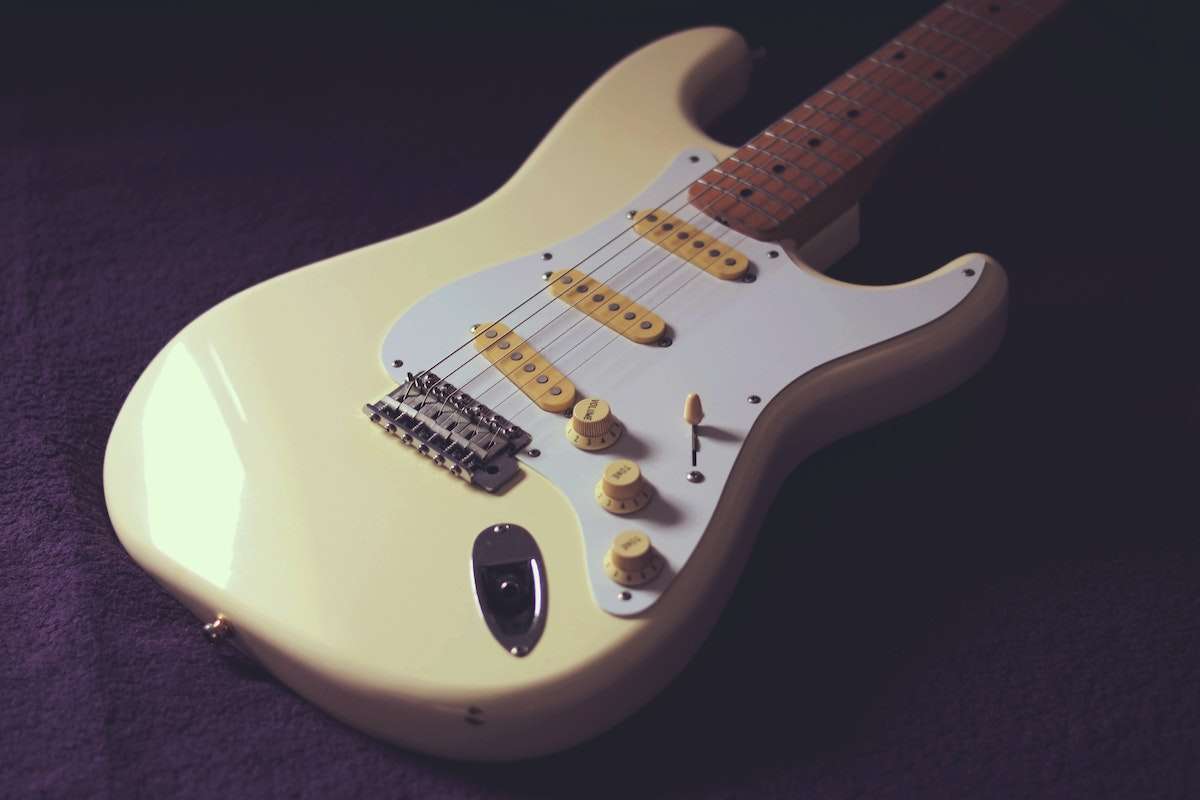
Related: How to play the minor scale, positions & theory
Harmonic Minor Scale Degrees
The harmonic minor scale is made up of seven degrees, just like any other diatonic scale.
The degrees of the harmonic minor scale are:
Tonic (root note)
Supertonic (major second)
Mediant (minor third)
Subdominant (perfect fourth)
Dominant (perfect fifth)
Submediant (minor sixth)
Leading tone (major seventh, raised from the natural minor scale)
The raised seventh degree is what gives the harmonic minor scale its unique sound and distinguishes it from the natural minor scale.
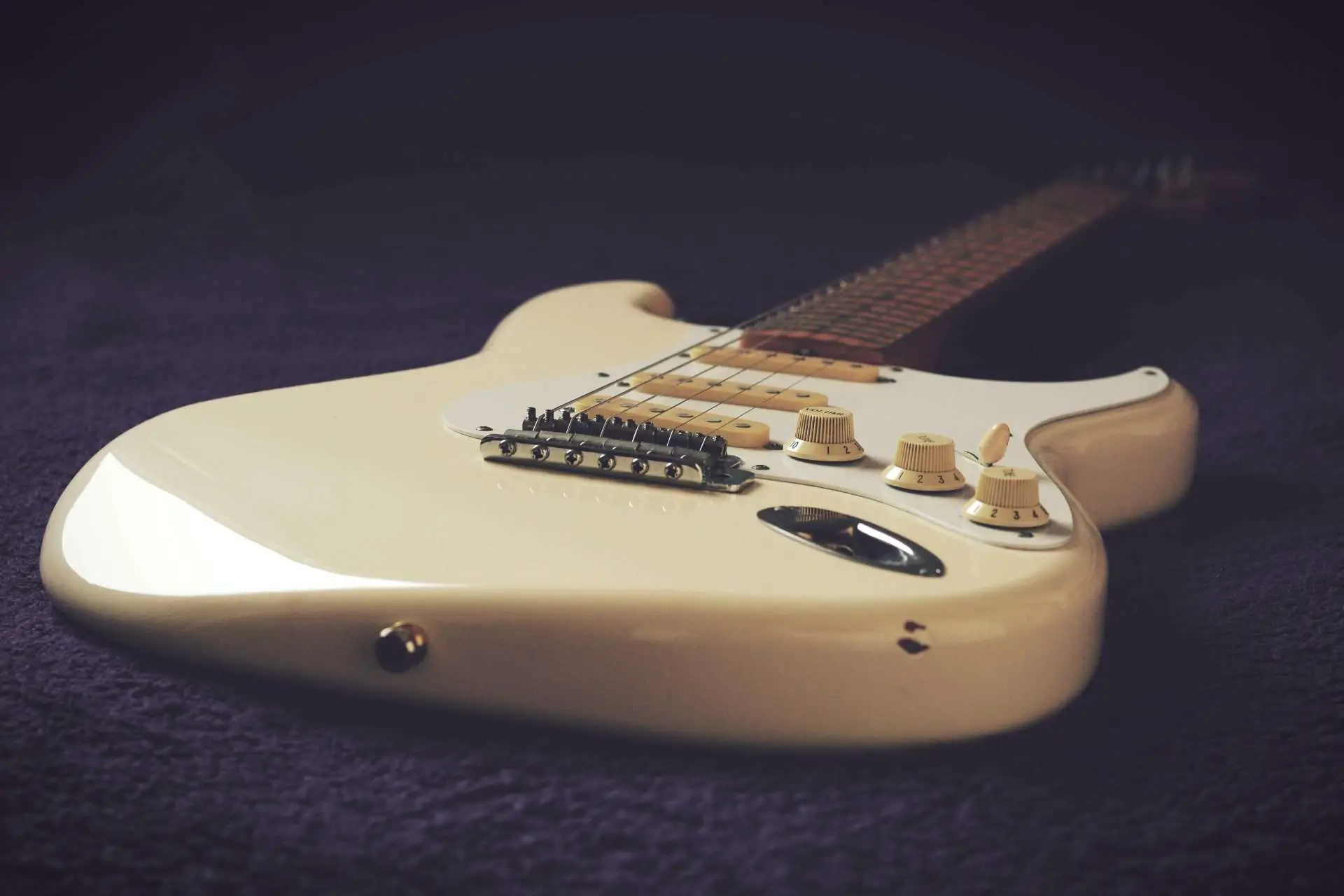
Related: How to play the minor pentatonic scale
Intervals of the Harmonic Minor Scale
The interval formula for the harmonic minor scale on guitar is:
Root (1) – b2 – #2 – b3 – 4 – 5 – b6 – #7
This formula represents the sequence of intervals that make up the scale, starting from the root note and continuing up to the octave.
The “b” symbol before a number indicates a flat (lowered) interval, while the “#” symbol represents a sharp (raised) interval.
The interval formula for the harmonic minor scale is what gives the scale its unique character, with the augmented second and raised seventh intervals creating tension and resolving in interesting ways.
Understanding the interval formula is crucial for learning to play the scale anywhere on the fretboard and using it in improvisation or composition.

Theory Behind The Harmonic Minor Scale
The harmonic minor scale is a variation of the natural minor scale, which is one of the seven modes of the major scale.
The natural minor has a distinct interval pattern of W-H-W-W-H-W-W, where W stands for a whole step (2 frets on the guitar), and H stands for a half step (1 fret on the guitar).
To create the harmonic minor scale, we raise the seventh degree of the natural minor scale by a half step.
This creates an interval of a major seventh between the sixth and seventh degrees of the scale, which is different from the natural minor scale that has a minor seventh interval.
This raised seventh degree is the leading tone of the scale, which creates a strong sense of resolution when it is resolved to the tonic (root note).
The harmonic minor scale also has an augmented second interval between the second and third degrees, which is a unique feature of the scale.
This interval creates tension and dissonance, which can be resolved in interesting ways in melodies and harmonies.
In summary, the theory behind the harmonic minor scale involves raising the seventh degree of the natural minor scale to create a leading tone and introducing an augmented second interval to add a sense of tension.
5 E Harmonic Minor Scale Positions
Position 1
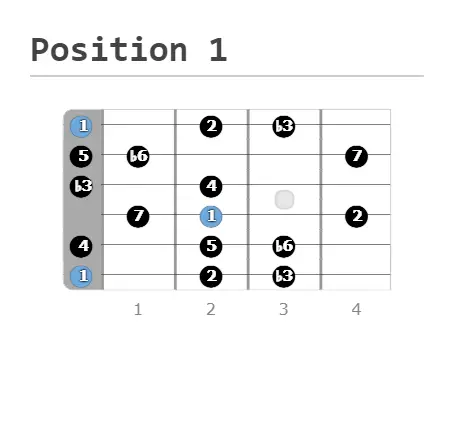
Position 2
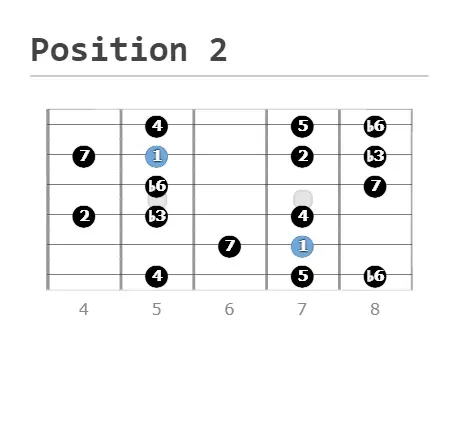
Position 3
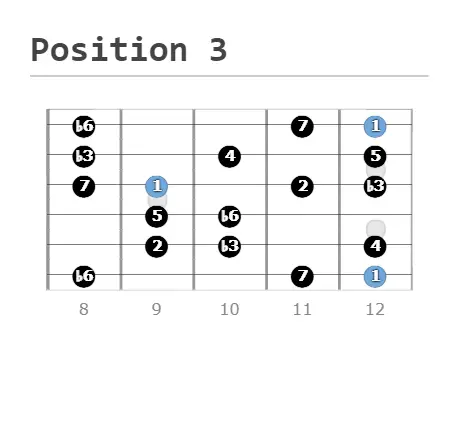
Position 4
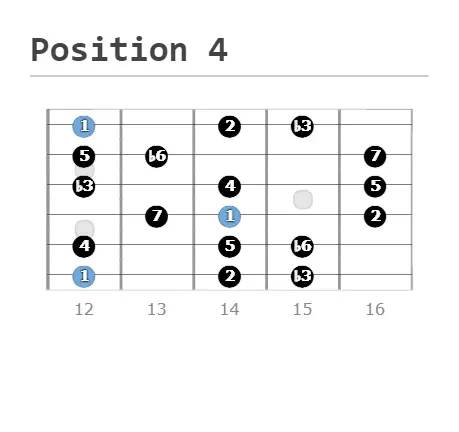
Position 5
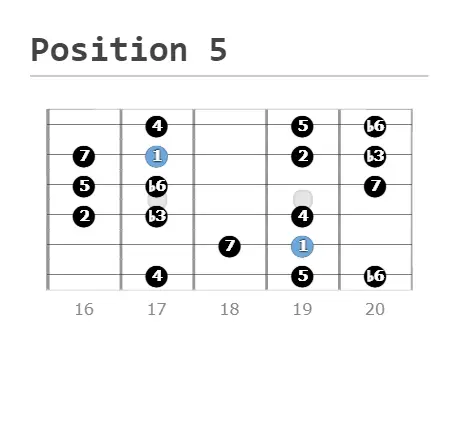
Full Fretboard

Tips To Learning The Harmonic Minor Scale
How do you practice harmonic minor scales on guitar? Here’s a few tips
Practice the scale ascending and descending: Play the scale ascending and descending slowly and evenly, making sure to hit every note clearly.
Play horizontally or vertically: Try to play the scale on just 1 or 2 strings in order to move across the fretboard. Then try playing it across all 6 strings but in a single position.
Practice alternate picking: Practice the scale using alternate picking to improve your picking technique and speed.
Try making a lick or a riff: Try getting creative & create a short music passage that includes the scale notes. You can try adding in other techniques such as slides & bends between the notes. This will help you develop your own associations with the scale in a real-world application & you will making your own bits of music along the way.
Remember to start slow and gradually increase the tempo as you become more comfortable with the scale. It’s important to practice consistently to develop muscle memory & discipline, however it may also help to venture beyond this into more creative styles of practice.
Chords Related To The E Harmonic Minor Scale
Here are three chords that go well with the E Harmonic Minor scale:
Em: Since E is the root note of the scale, the Em chord is an obvious choice that fits the scale perfectly.

G: The G major chord is a great option as it contains the notes G, B, and D, which are all present in the E Harmonic Minor scale.

B7: The B7 chord is a dominant chord that contains the notes B, D#, F#, and A, all of which are found in the E Harmonic Minor scale. It creates a sense of tension and can be used to transition to other chords in the progression.

Related: Natural minor chords to explore
Frequently Asked Questions

What’s the difference between the harmonic minor scale & the natural minor scale?
The harmonic minor scale differs from the natural minor scale in that it raises the seventh degree by a half step, creating a major seventh interval between the sixth and seventh degrees.
In contrast, the natural minor scale does not contain this raised seventh degree and has a more subdued, melancholic vibe.
What is the difference between melodic & harmonic minor scales?
The melodic minor scale is a variation of the natural minor scale that raises the sixth and seventh notes by a half step.
The harmonic minor scale, on the other hand, raises only the seventh note of the natural minor by a half step, giving it a slightly darker vibe.
What is the harmonic minor scale good for?
The harmonic minor scale is great for creating a sense of drama & contrasting resolution to your compositions.
It has been commonly used in various genres including classical, metal, and jazz music but not only limited to these. Feel free to try it out on any of your music writings!
You many be interested in: Minor Chord Progressions
What are the notes in the E harmonic minor scale?
The E harmonic minor scale consists of the following notes:
E – F# – G – A – B – C – D# (or Eb) – E
The scale has a unique sound due to the raised seventh note (D#), which is a semitone higher than the seventh note in the natural minor.
What are the 3 types of minor scales?
There are 3 types of minor scales:
Natural Minor: This is the standard minor scale, also known as the Aeolian mode.
Harmonic Minor: This scale raises the seventh note of the natural minor by a semitone.
Melodic Minor: This scale raises the sixth and seventh notes of the natural minor by a semitone when ascending, but returns to the natural minor when descending. This creates a smoother & more melodic vibe.

Final Words On The Harmonic Minor Scale
The harmonic minor scale is a variation of the natural minor scale that raises the seventh note by a semi-tone.
This scale has a distinct sound, often described as exotic or dark, and is used in a variety of musical genres, including classical, metal, and jazz.
If you’re a new guitar player looking to take your playing to the next level, I highly recommend trying out the harmonic minor scale.
This scale can add a new level of depth and complexity to your playing, allowing you to create a sense of tension or drama in your music.
By incorporating this scale into your practice routine, you’ll open up new possibilities for creativity and musical expression!
